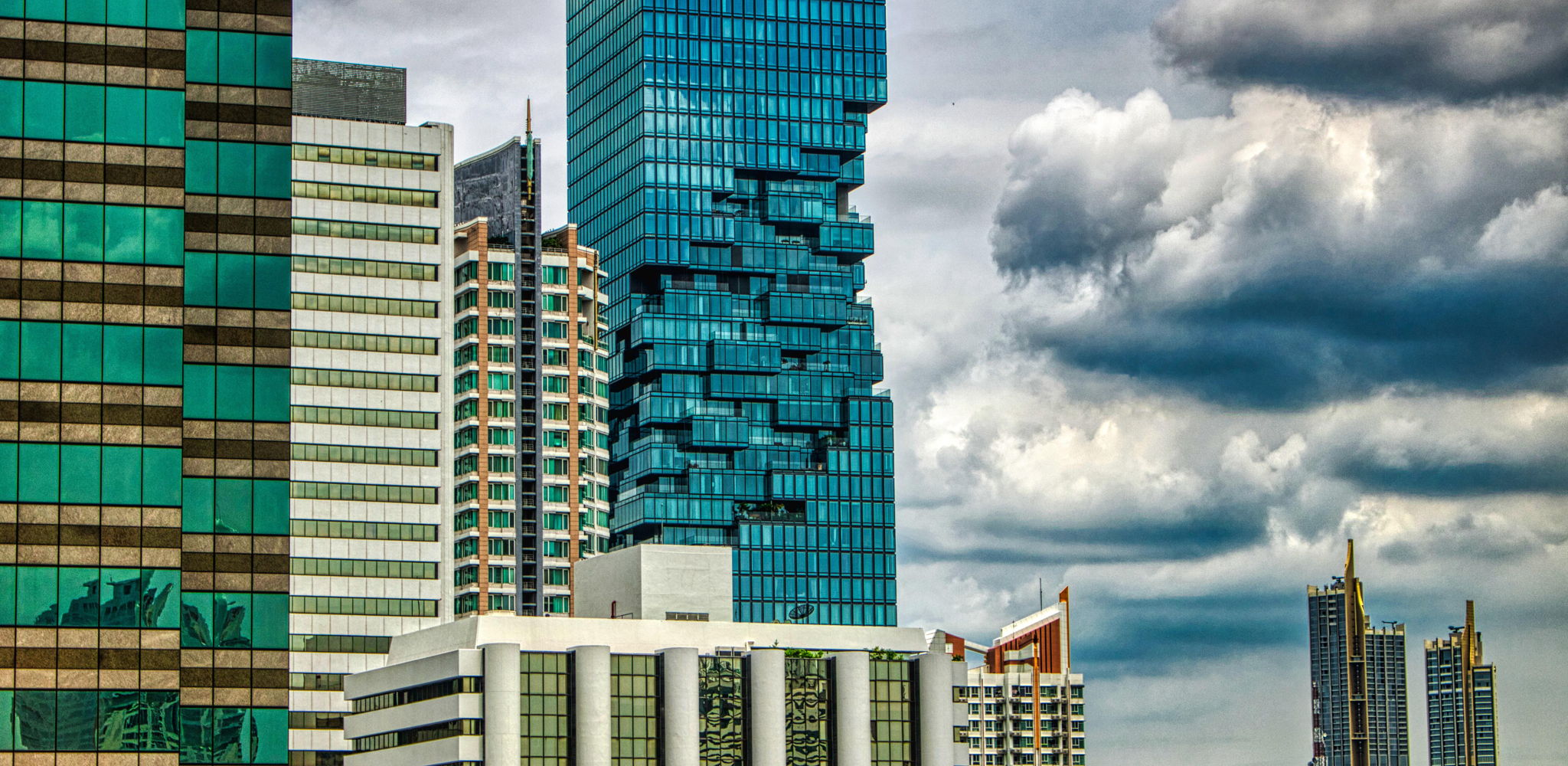Silom
Overview
Silom, much like it’s neighbor Sathorn, presents a mix of work and fun, with office workers occupying the streets (and majority of sitting places in local eateries) by day, giving place to restaurant and bar patrons by night.
As we’ve mentioned in the Sathorn guide, Sathorn and Silom are closely interconnected and often taken as one area, so keep in mind that if you live on Silom, Sathorn is within easy reach.
Silom area encompasses neighborhoods along Silom road, from it’s intersection with Rama IV to Charoen Krung. Bang Rak area is often broadly included with Silom (when discussing real estate market, for instance). Silom is connected to Sukhumvit and the western side of Chao Phraya by eponymous BTS Silom line. MRT Blue line Silom station is located at the beginning of the road as well. Silom road itself is one of the most important roads in Bangkok, but, for that reason, it can be a very busy one.
Silom is one of the earliest commercial districts in Bangkok. In 19th century, most of urban life in Bangkok happened on riverside or on surrounding canals. Silom and Bangrak were busy trading districts, welcoming many European merchants and envoys. You can still see glimpses of that past here, with some preserved colonial buildings around the area, however Silom changed a lot over time, with roads replacing canals and office towers in place old commercial buildings.
Sathorn/Silom area is considered one of Bangkok Central Business District. While Sathorn with its embassies and corporations HQs gives off more of a upscale, ‘Thai Wall Street’ vibe, Silom is a more inclusive place with more of… everything. Between its many office buildings you will find upscale restaurants, local eateries, street food, historical buildings, boutique hotels, art galleries, even a red-light district.
Eastern side of Silom (from Rama IV to Narathiwas Road) is the busiest one; it also has the most tourists. Apart from the normal Silom wares, here you will find the infamous Patpong district with its gogo-bars and other adult entertainment.
The western end of the road from Narathiwas to Charoen Krung Road is quieter so far — however recently Charoen Krung road started developing into a fashionable creative district, so we expect the rest of the neighborhood to pick up as well.
One of the biggest attractions in the area is Lumphini park - Bangkok’s first public park, and one of the biggest. On its sprawling 57.6 hectares, you will find walking paths, lakes, playground and and even and old-school outdoor lifting gym. It’s never empty, with morning joggers, families with kids, elderly going for a walk, tourists, office workers on break taking over each other through the day. Silom road starts at the corner of Lumphini park, so for most of the southern Silom the park is within easy reach.
Silom and Bang Rak are a melting pot of Bangkok cuisine, with multiple Thai, Chinese, Indian, Malay and Middle-Eastern eateries in the area. Good food is everywhere (you will see this refrain repeated a lot for Bangkok), but especially remarkable food destinations include
- Soi Convent - packed with everything from street food carts to high-end international cuisine and bars (including Vesper cocktail bar routinely ranked among Asia top-50 best - at #19 as of 2022);
- Soi Thaniya - with its many authentic Japanese restaurants (not to mention colorful nightlife)
- Silom soi 20 - a local street food favourite
Main shopping centers include Central Silom Complex and a new Samyan Mitrtown (OK, this one is actually juuuust off Silom). The area also has a good selection of international hospitals including BNH Hospital, Bangkok Christian Hospital and Pulse clinic; and some of the top international schools including St. Joseph Convent School and New Sathorn International School.
Silom has a wide variety of historical buildings, including colorful Sri Mariam temple, Assumption Cathedral and Neilson Hays Library.
Real estate market
Silom is considered to be one of the prime areas due to its historical status, central location, connectivity, high-profile commercial and retails spaces, developed amenities and access to Lumphini park. New launches along Silom road normally fall in 200,000-300,000 THB range, with the most high-profile projects located between Silom and Sathorn roads - especially in the middle of the street in what’s known as SOLU (South of Lumphini) area around BTS Chong Nongsi.
Lumphini park, being one of the biggest public parks in Bangkok CBD remains a significant attractor for residential buyers and tenants in the area. Recognizing it’s importance, the government and municipal authorities have launched a number of renovations and expansion programs. Estimated 1 billion THB is allocated for a comprehensive renovation scheduled to finish ahead of the park’s 100th anniversary in 2025. Additional 260-million THB are directed to to transform an old 1.3 km overpass from Lumphini to Benjakitti park into a landmark ‘green bridge’ for pedestrians and cyclists - the works are scheduled to be completed in September 2022 (Benjakitti park itself is undergoing a massive expansion as well).
Apart from infrastructure, Bangkok’s area growth recently has been driven by mixed-use large-scale developments. One of remarkable recent launches is Dusit Central Park which will be built on the plot of the old Dusit Thani hotel in Silom and will include hotel, condominium, retail and office spaces. Developments of this scale drive the appeal of the entire surrounding area.
